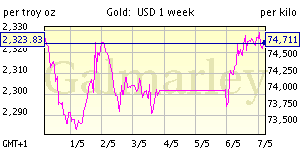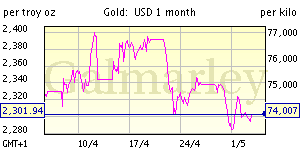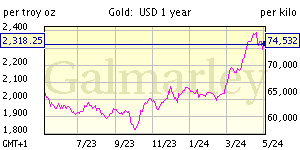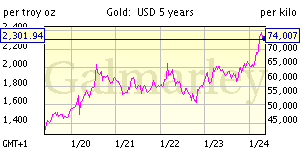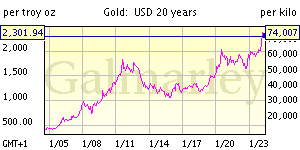Yesterday's article at the Prudent Bear entitled When Money Becomes Worthless presented the following statistics:
The problem arises because of the size of the world's capital pools in relation to its volume of trade. The total assets of U.S. hedge funds in September 2009 were $1.95 trillion (down from almost $3 trillion a year earlier). That compares with total U.S. imports of goods and services in 2008 of $2.1 trillion. However, in addition to the hedge funds, there are other huge pools of money available for deployment in commodities markets. For example China and Japan each have around $2 trillion of foreign exchange reserves, while Saudi Arabia and the Gulf states have comparable sized pools of liquid assets available for investment. Since the available inventory of commodities is a fraction of their annual production, we could potentially end up with an extreme case of too much money chasing too few goods.
Since most of the world's gold is already owned by governments and sovereign wealth funds, it is estimated that the available supply of gold is about $1 trillion. So, if we add up the above numbers of available funds, JUST FROM THE ABOVE MENTIONED SOURCES, you end up with $6 trillion. When you add in the Saudi's and Gulf states you come up with $8 trillion.
So if you have $8 trillion chasing $1 trillion, that ends up forcing the price of gold up 8 times its current price of $1000 per ounce.
Of course these figures are minimal compared to the total world's wealth that is available to be deployed into gold.
My guess is that the ultimate price of gold in the years to come will end up much, much higher than this $8000 per ounce figure.
So it matters not whether the price of gold is $1000, $1100, or $1200. The best time to buy gold is "as soon as you can."
![[Most Recent Quotes from www.kitco.com]](http://www.kitconet.com/images/quotes_7a.gif)

